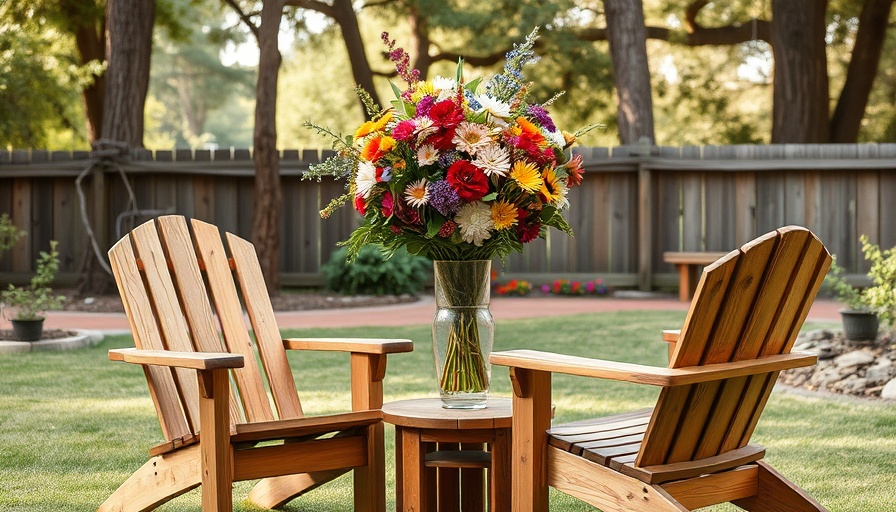
Journey into Gardening: From Rock-n-Roll to Resilient Gardens
In a recent episode of The Plantastic Podcast, host Dr. Jared Barnes engages in a fascinating discussion with gardening enthusiast and author Pam Penick. The conversation provides insight into her life journey—from her unconventional start at a rock-n-roll magazine to becoming a prominent figure in eco-friendly gardening in Texas.
Pam’s evolution into gardening was not just a career shift; it was a heartfelt response to raising children and the need for sustainable homes. Her deep-rooted passion for gardening intertwines with her commitment to eco-friendly practices, embracing the concept of sustainable home design as vital to modern living.
Why Sustainable Gardening Matters in Texas
Gardening in Texas can be challenging due to extreme weather conditions. Pam emphasizes the importance of planting a diverse array of native flowering plants to support pollinators and wildlife. “A lawn can't do that,” she states, prompting homeowners to rethink traditional landscaping in favor of natural solutions that foster ecological balance.
Her philosophy aligns with many current trends emphasizing eco-friendly gardening. According to a recent survey, over 70% of Texas homeowners are actively seeking ways to integrate sustainable practices into their gardening routines, aiming for a healthier ecosystem.
The Role of Native Plants in Texas Gardens
During their conversation, a notable point arises about the resilience of native plants, which can thrive in harsh conditions and support local wildlife. Pam’s latest book, Gardens of Texas, showcases various Texas gardens that celebrate this native resilience. As she recounts her experiences visiting Dr. Barnes’s garden, she highlights how thoughtful design and careful plant selection play a role in creating beautiful, functional spaces.
Dr. Barnes's garden, featured in Pam's book, effectively demonstrates how to integrate native plants into formal designs, providing practical examples for homeowners wanting to adopt natural landscaping techniques.
Making the Connection: Community and Collaboration
Pam invites her listeners to engage more deeply with local gardening communities. Highlights from the podcast include upcoming events, like the Fall Plant Fair at Stephen F. Austin State University, where she’ll be speaking and signing copies of her new book. These local interactions are crucial for eco-conscious homeowners hoping to learn more about sustainable practices and connect with like-minded individuals.
It's a call to action for all who wish to create not just a garden, but an ecosystem, promoting zero-waste practices and water conservation. By participating in such events and discussions, community members can become advocates for sustainable living.
Practical Steps for Eco-Conscious Gardening
1. **Diversify Plant Selection**: Start incorporating native plants into your garden. They require less water and attract beneficial insects.
2. **Implement Composting**: Use kitchen scraps and yard waste to create nutrient-rich compost, reducing landfill impact and enriching your soil.
3. **Explore Water Conservation Techniques**: Consider rainwater collection systems and drip irrigation. These methods can significantly reduce water waste while keeping your plants healthy.
4. **Adopt Energy Efficiency Practices**: When planning any garden renovations, think about how to improve energy efficiency in your home, from using shade-providing trees to installing more efficient lighting in outdoor areas.
5. **Promote Wildlife Habitats**: Design areas in your yard that serve as habitats for local birds, bees, and butterflies. This enhances biodiversity and leads to a thriving garden ecosystem.
Join the Movement!
As the podcast wraps up, Pam emphasizes that gardening isn’t just about beautifying our surroundings; it’s about fostering a sustainable future. By engaging with the local gardening community, learning from experts, and actively participating in eco-friendly practices, we can create vibrant neighborhoods that are beautiful and resilient.
If you’re excited to delve more into the world of sustainable gardening, consider attending upcoming events where you can learn alongside other passionate gardeners. It’s not only an opportunity to gather new insights but also a chance to make lasting connections.
If you're inspired by Pam's story and want to explore more, check out her appearances where she shares valuable insights on gardening and sustainability. Let’s cultivate a greener tomorrow together! Add Row
Add Row  Add
Add 




Write A Comment